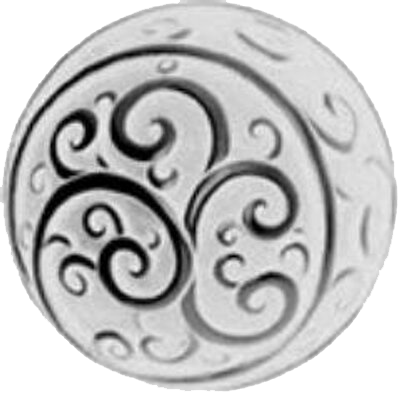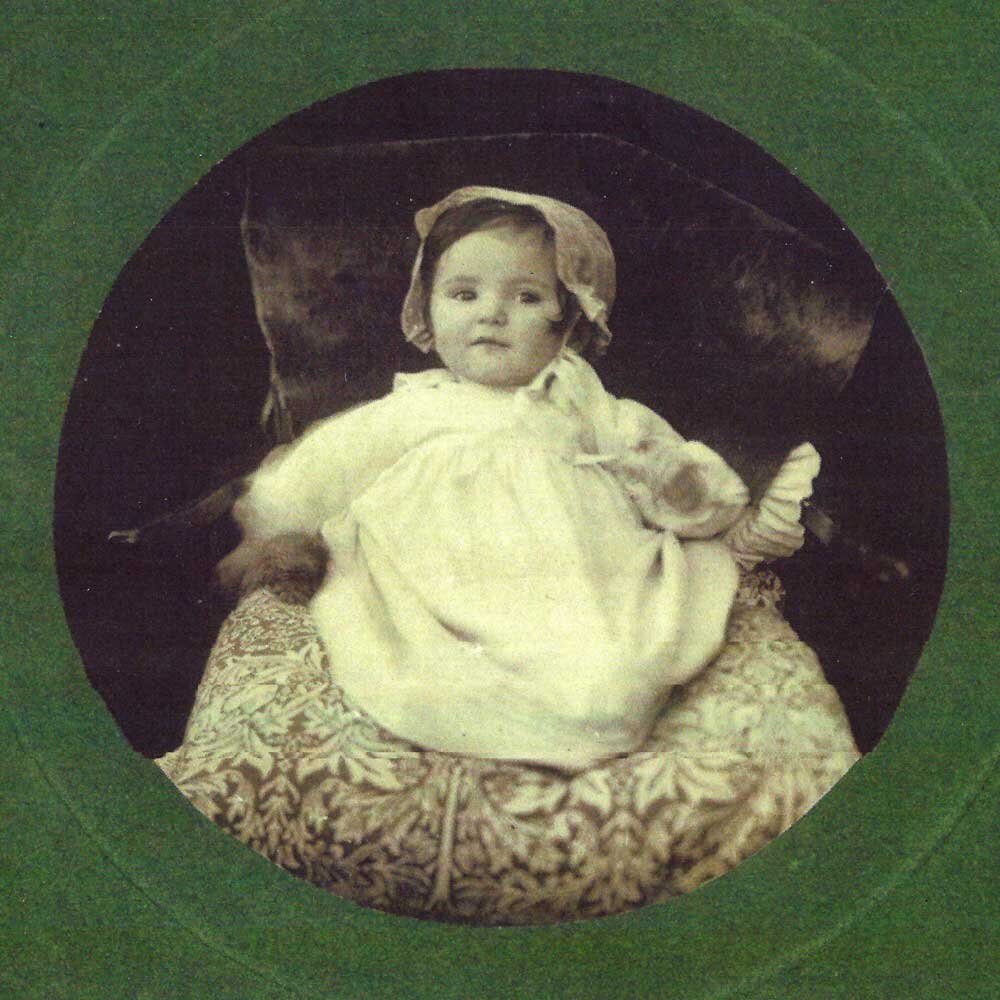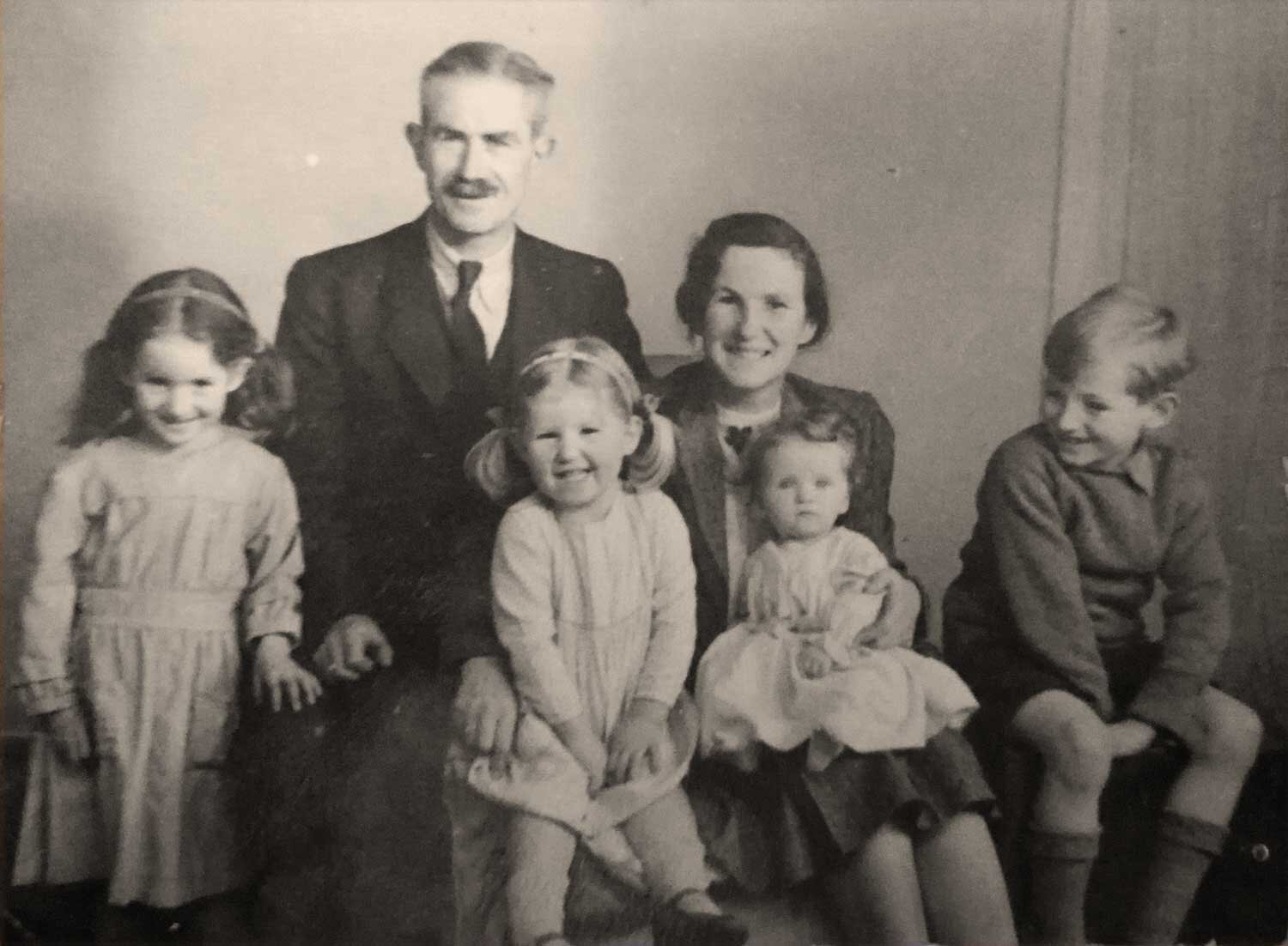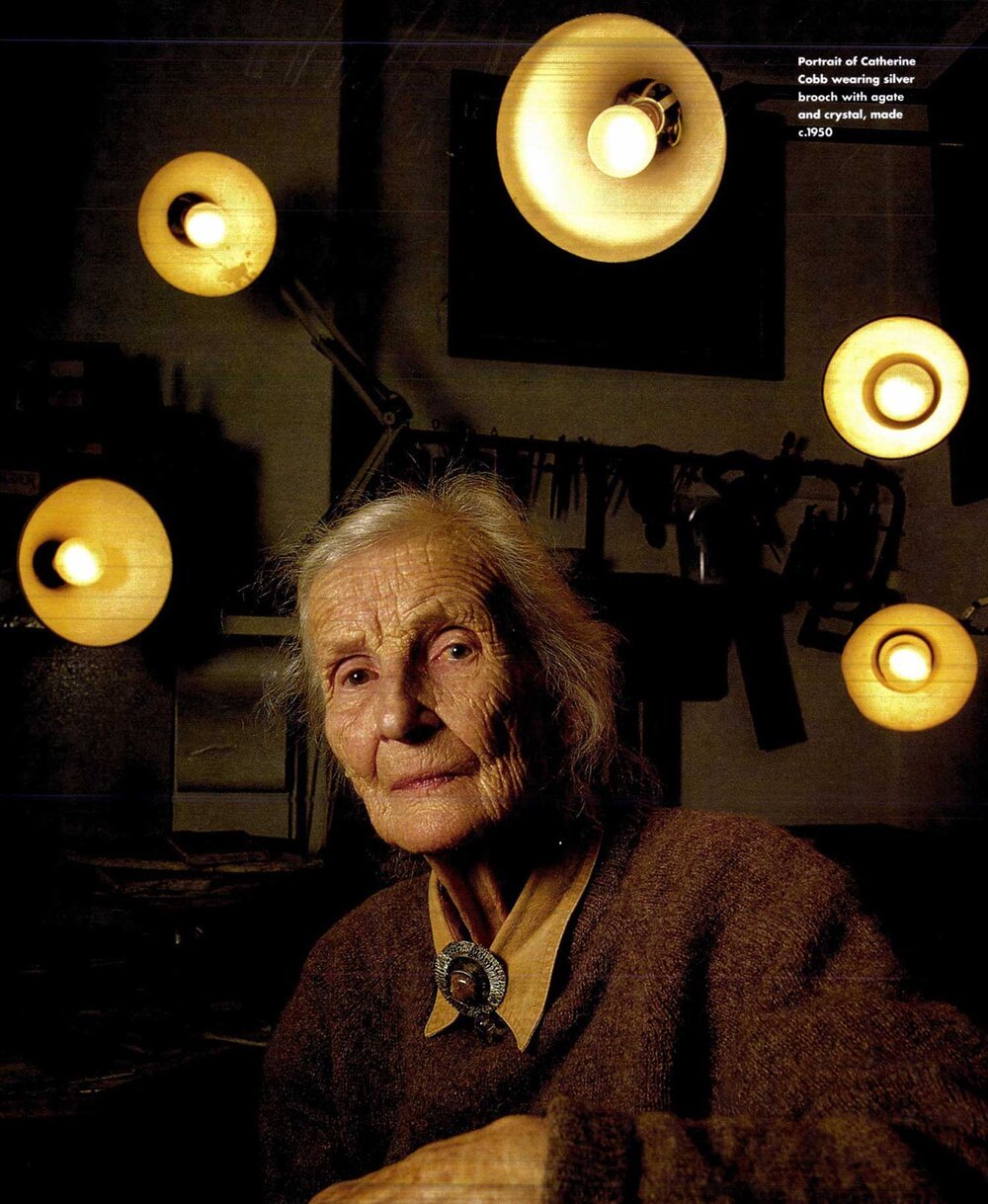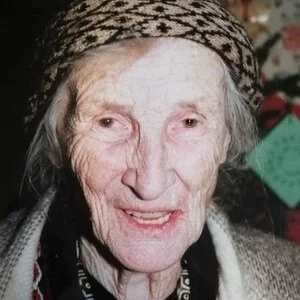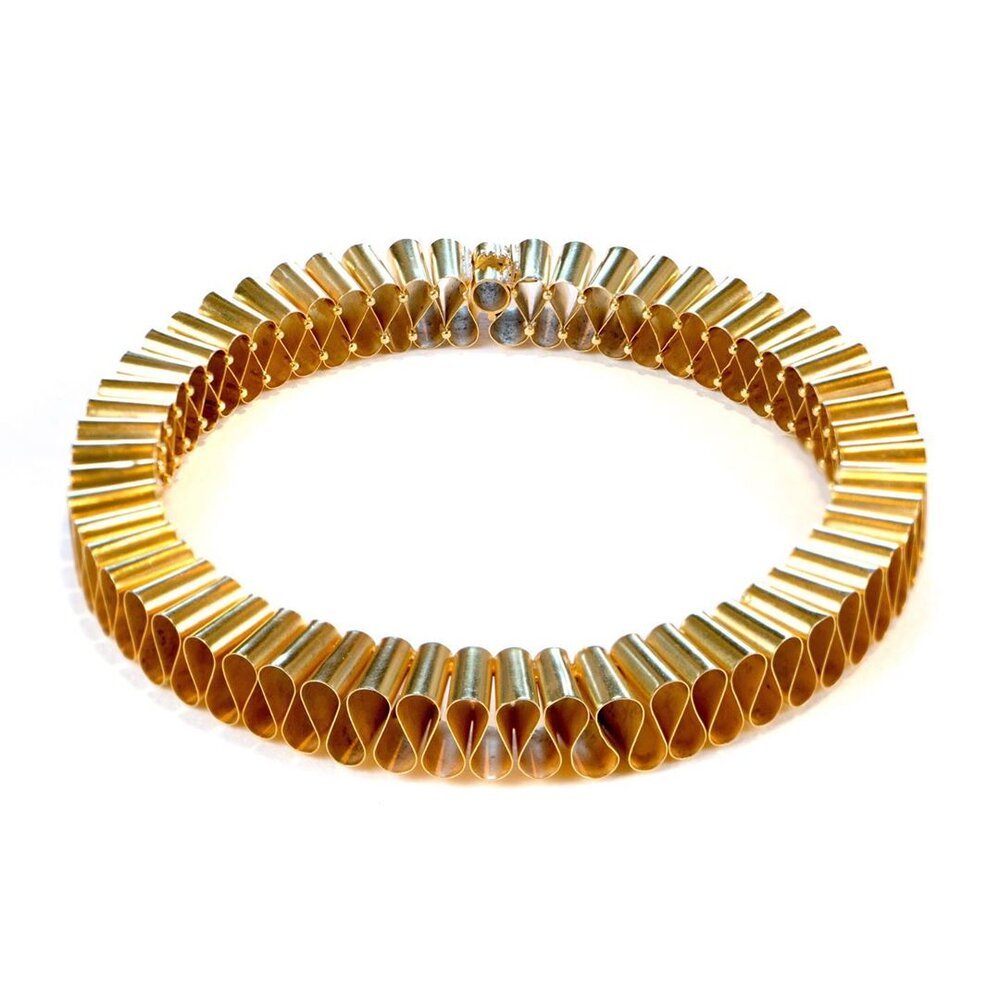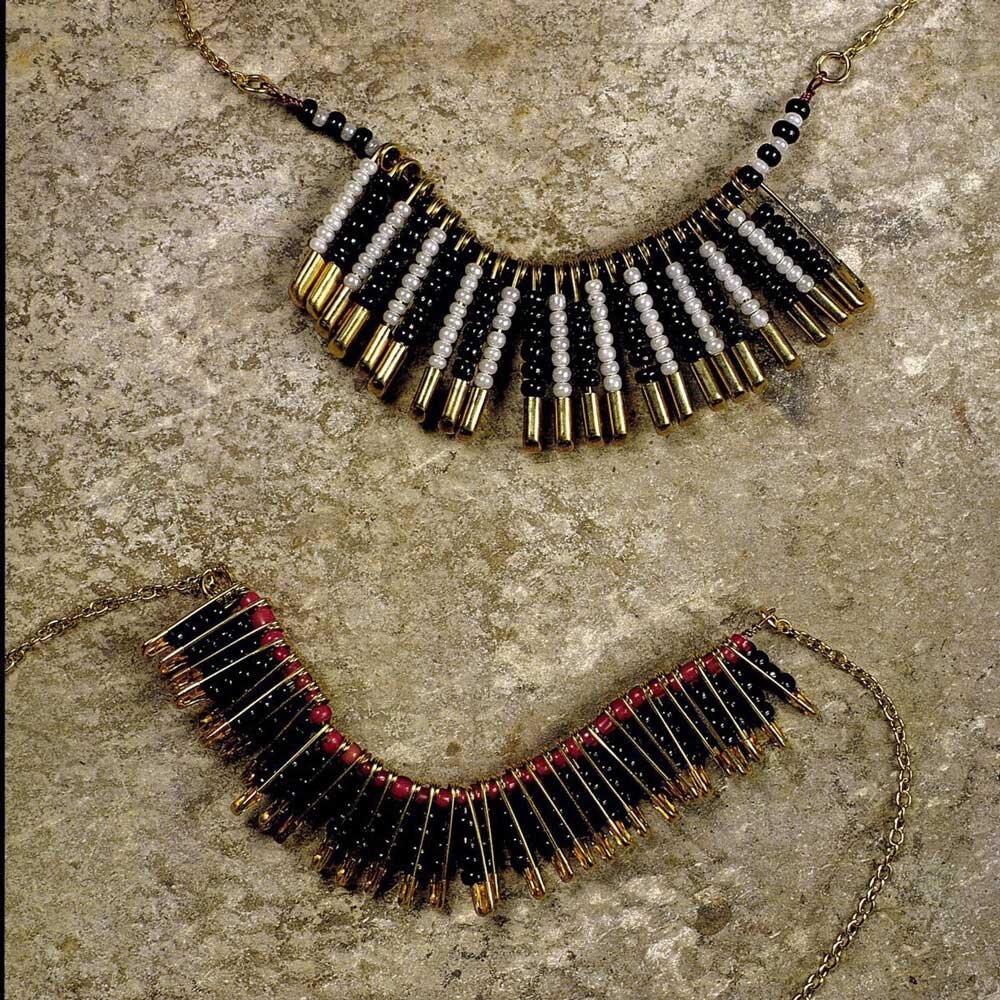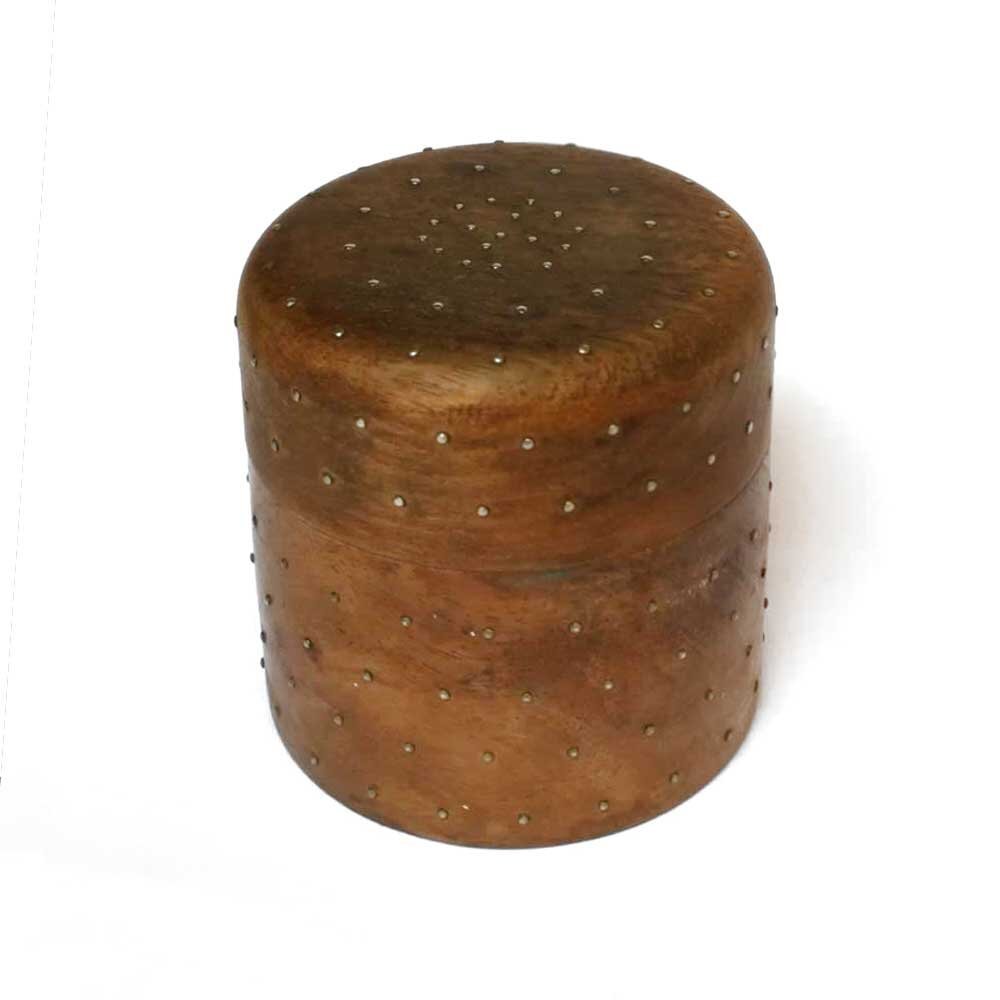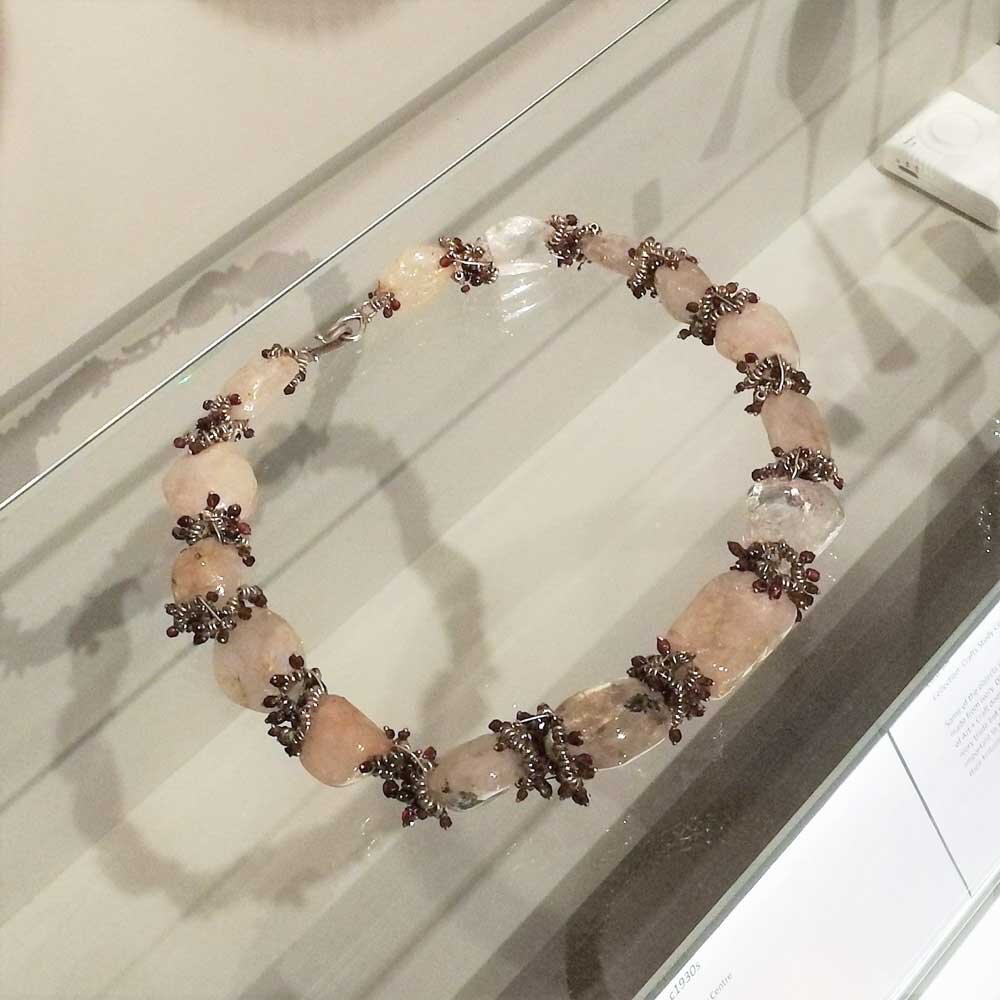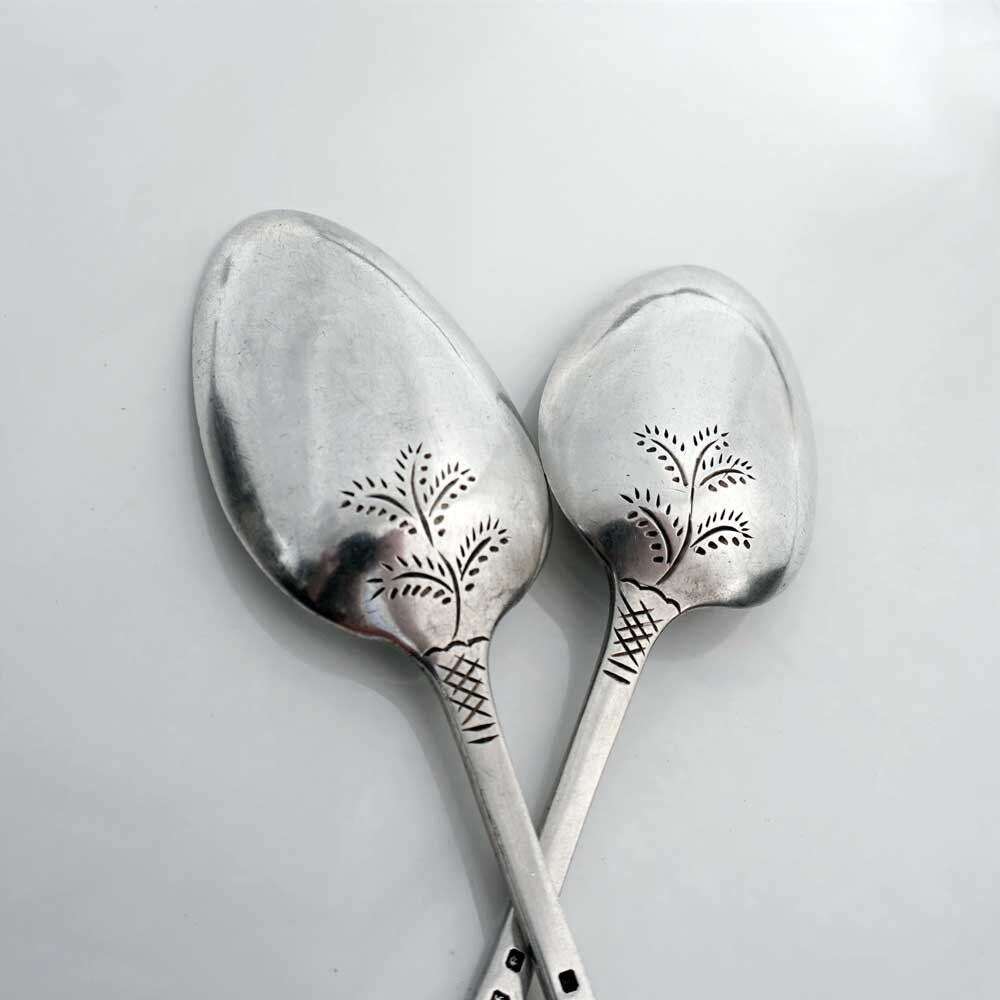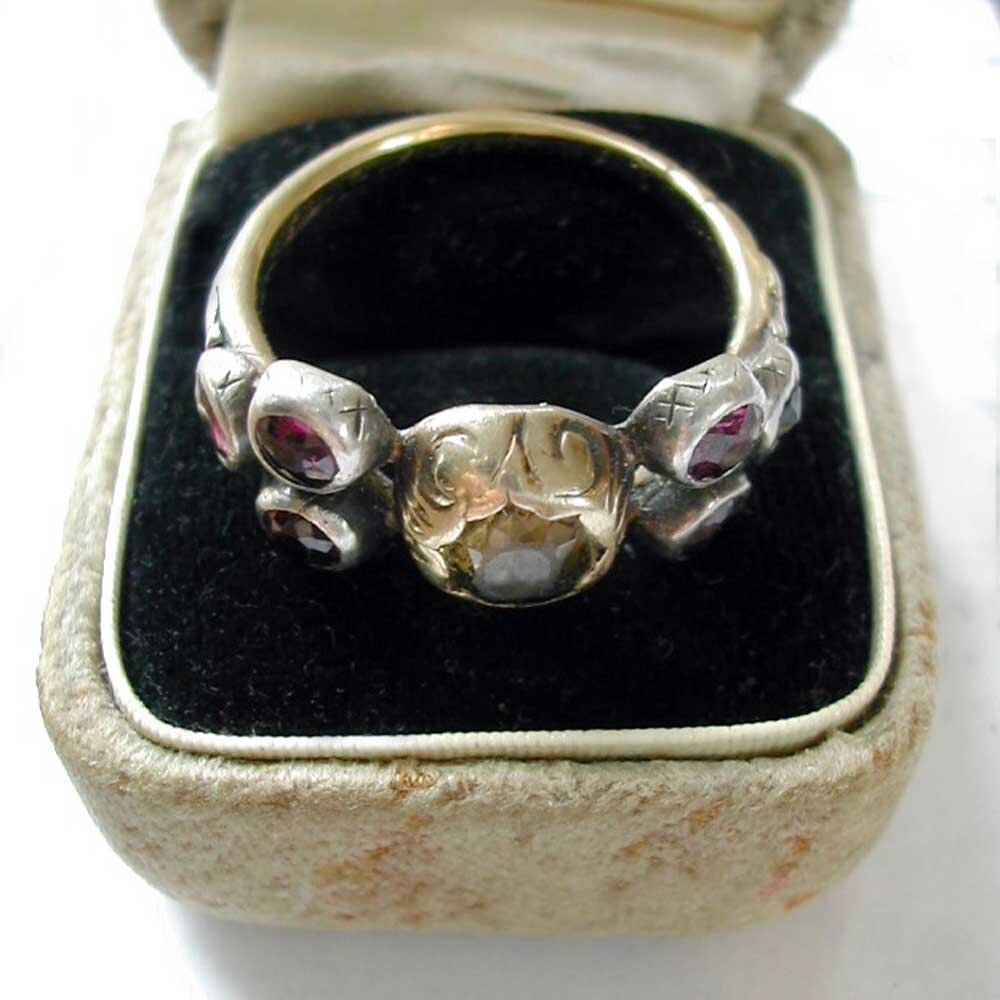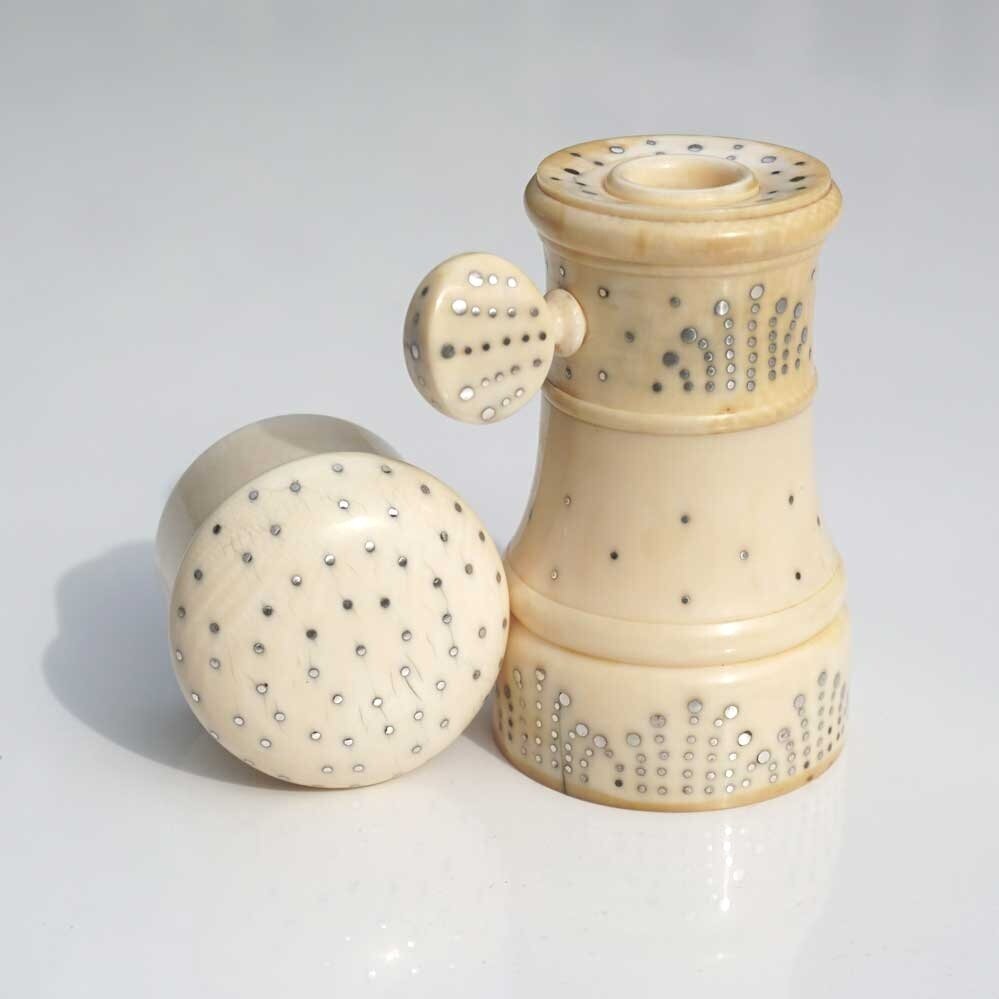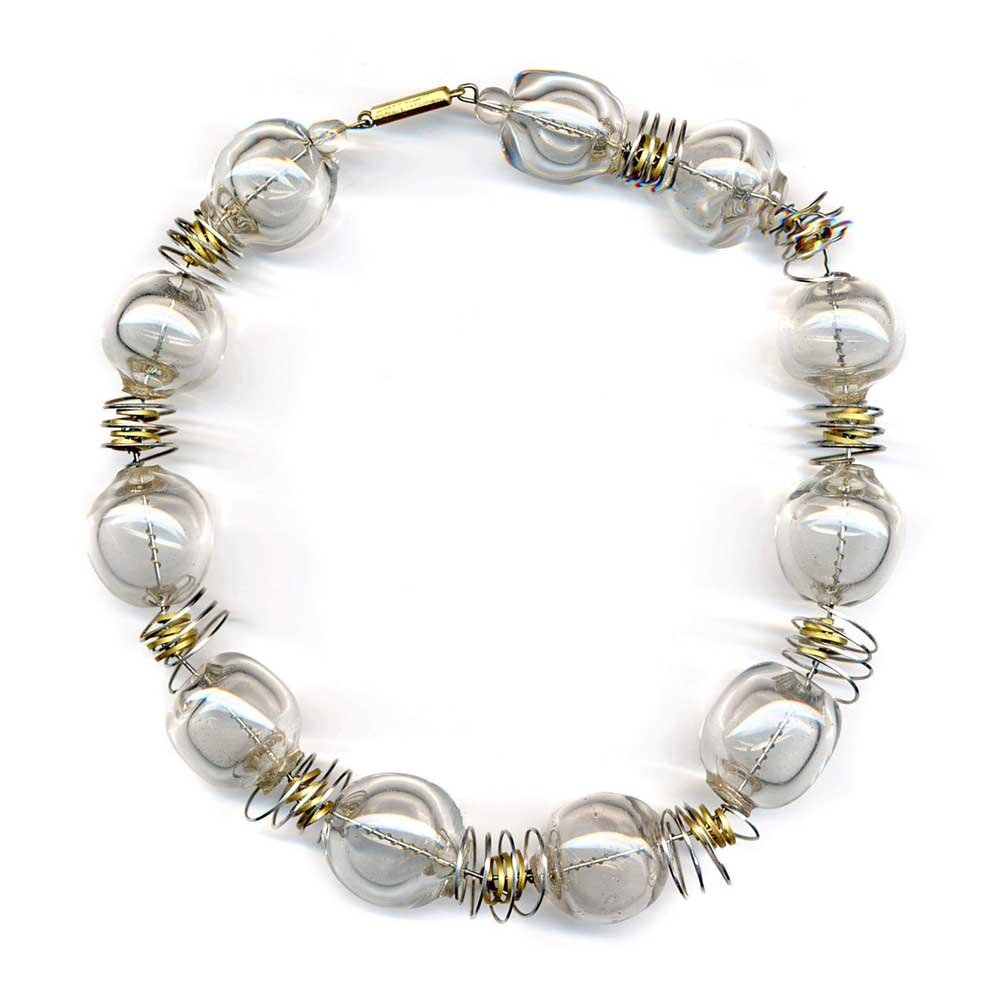Catherine 'Casty' Cobb 1903 - 1995
My grandmother was a silversmith, she introduced mini-me to metalwork in the mid 1980s, by then she had taught hundreds of others her craft. She'd lived through two world wars, raised four children, travelled the world and worked as a puppeteer assistant performing to the likes of Winston Churchill and H.G. Wells.
Catherine ‘Casty’ Cobb (née Cockerell) was a maker through and through, born to a bookbinding father, a silversmith mother, her family had close connections to William Morris and his circle.
My first memories of Granny's Cambridge workshop was aged of 6 or 7. She showed me and my cousins how to make little copper buttons, cutting and doming little metal discs and decorating them with tiny scraps of silver. She mesmerised us with her fire handling skills, melting rough scraps of silver into perfect shiny balls, squashing things in the rolling mills, bashing things into shape on the anvils.
She was wonderful! Think a less conservative, more handy Miss Marple in patchwork and tie-dyed aprons. Well spoken, stoical and practical but with an eccentric, colourful style.
Casty trained in jewellery and silversmithing at the Central School, she began taking on orders for individuals and worked at Cameo Corner, a jewellery shop near the British Museum. In the late 20s and early 30s Casty had a detour from jewellery and began working with puppets. She spent summers travelling with her good friend Joyce Clissold, trundling a handcart along the south coast performing Punch & Judy shows.
About the same time she began assisting William Simmonds, helping in his woodcarving workshop in the Cotswolds and behind the scenes of his critically acclaimed puppet shows.
William in his Oakridge workshop carving a puppet, photo by his assistant Catherine Cobb
Pantomime horse by William Simmonds. String puppet owned by Crafts Study Centre
"Simmonds puppets… are little marvels of the sculptor’s art, as delicate in their miniature elegance as figures of Tanagra. The plays have a literary quality, a sense of the past, and at their best a touch of poetry … sheer enchantment. . . His audiences had included many of the most fastidious and influential figures in intellectual and fashionable society. . ." - A.B. Walkley, theatre critic for The Times
“In the 1930s, I helped William Simmonds with many puppet shows. . .We visited country houses to perform at parties for friends and tenants, great fun these. Once we went to Eton Hall, Cheshire, home of the Duke of Westminster, and performed to his guests including Sir Winston Churchill. What we were doing was almost unique in those days. ”.
“There was a circus with horse riders and even a pantomime horse made of two puppets. At a crucial moment the hook holding them together would be undone briefly revealing the startled expressions of the puppet playing the horse's back-end before they both scarpered off the stage”.
“A surprising and unexpected happening occurred when the curtain was still down at the end of the interval. A door opened above the stage and two puppet workmen proceeded to clamber down, move props and paint scenery, all the while conversing in broad Gloucestershire dialect as they discussed preparations for the next scene”.
“William Simmonds worked all the puppets single-handed above a unique stage designed by himself. . .My job was to ensure that each puppet was ready to play its part and to hand them to William when needed”. - Recollections of Casty Cobb written in 1980.
After her four children had grown up, she spent time in Africa and Asia working as an arts examiner and continued to travel well into her 80s, going to China soon after it opened up to western tourists and flying off to Australia to see the great barrier reef.
Her house was full of collections of curious beautiful things made by talented friends or brought back from her travels to distant lands. African baskets hung from the corridor ceilings alongside Javanese shadow puppets, sculptures by William Simmonds on the mantelpiece, beautiful block print curtains made by friends Barron & Larcher, quirky fabric collages by Joyce Clissold.
(pics needed!)
Living through the wars and growing up with crafters meant she was fully immersed in the ‘make do and mend’ ethos, so much so that when my mum was growing up she was deeply shocked to discover that people often simply threw things away when they were broken or worn out!
Being steeped in the Arts & Crafts tradition she wanted people to enjoy their work, she knew the satisfaction that comes from designing and making something from scratch and having a deep understanding of a craft and a grasp of a material.
In December 1921 Casty wrote to her uncle Theo in Colorado “I’m going to the art school in May I hope to take an examination in jewellery etc, which if one passes gives some sort of footing from which to start from. There is the possibility of my teaching jewellery at a school at home, if it comes off it will be interesting, that is if I can do it!” At just 17 years old she had a clear idea that teaching jewellery making was what she wanted to do with her life.
Many years later Casty did indeed teach jewellery from home, she took students from Cambridge College of Arts and Technology (then known as the Tec, now ARU).
”Casty always had a waiting-list of eager students. . . she inspired us to look at things in a different way. No detail escaped her notice; she made mundane things seen fresh and interesting. Most of all she made us aware of the possibilities within ourselves, and encouraged us to make time to explore them.” - Christine Morrell,1995
Aged 16 I went to college a short walk from her workshop in Trumpington, I visited almost every week during my A levels. By then she was in her 90s and she’d refined her group of students down to a few of her favourite 'girls' (by then all aged 50+) who visited on a Tuesday, some of whom had been taught and guided by her for over twenty years.
Gina Dunlap moved to Cambridge from Connecticut, USA for a few years in the early 1990s, she was the last to be admitted into the group, here are some of her recollections of Casty:
“I met someone from Casty Cobb’s workshop, quite by chance, and she set up an interview for me. I was met by Casty at the door of her family home and her workshop. Tea was served, and I was aware that my measure was being taken by this elegant, fiercely intelligent, and charming lady. Well, next week, there I was, in the company of a group of women who would become my companions and friends for the next four years. (I didn’t know it then, but I was the last person to be admitted into Casty’s shop.)
We all worked side by side, chatting, sometimes in silence, to the sounds of hammers tapping. It was heaven. The workshop had benches for about ten people. It was rather dark, somewhat Victorian, lots of books in cabinets and eccentric objects and pictures on the shelves and walls. . .
Casty would pop in from time to time with a piece of jewelry or art from her travels. She showed and demonstrated her wonderful pique work on cutlery handles and on boxes she had made. I had never seen this technique and was fascinated as to how she could accomplish this with just a few tools.
Often Casty would show us objects from her collection to illuminate an idea or a technique, but just as often it was a challenge. Mostly to me, as I was the Yank. I remember her setting a piece on my bench saying, “You must do this, dear.” I remember, on having completed one of her challenges, she said to me quietly, “Very able work.” High praise from a woman who did not throw out compliments or suffer fools. From then on, she escalated—more tests. I loved every minute!
I learned so much from Casty, not just the older traditional techniques but how to just get on with it as one ages.
Lunch in Casty’s kitchen was always so interesting. Lots of ordinary chat at her table in front of the big, warm, beige Aga, hot coffee in her red mugs, but every now and then the conversation would turn to the war years and darker times. Many of the women in the workshop were also “of an age” and would share their experiences and memories. Always the same end to these musings—“mustn’t grumble, back to work.” Another life lesson I hadn’t expected”. Recollections of Gina Dunlap written in 2019
Casty died after a short illness in 1995 when I was just 18. I continued to learn from her through those favourite students of hers that carried on meeting in her workshop for the following few years. Even though she died nearly 25 years ago I'm still learning a lot about her.
This past year I've been fortunate to discover the biography of Puppeteer William Simmonds which gives a fascinating glimpse into an exciting part of her life; through the wonderful show at Ditchling Museum I got to see some of her best work, learnt more about her contemporaries and her place in 1920-30s craft scene.
Over the decades I've often wished I'd known her as a more appreciative grown up, not just a laid back teen, unaware of how exceptional she was. She led me onto my makers path at a very young age - my life would be unimaginably different if I hadn’t known her!
“Her enthusiasm and inventiveness inspired all who were fortunate enough to know her” - Kitty
